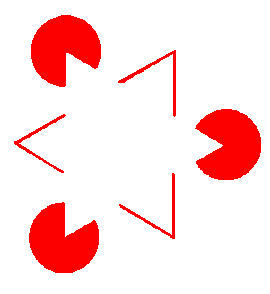
The process of perception begins with an object in the real world, known as the distal stimulus or distal object. For instance, taste is strongly influenced by smell. These different modules are interconnected and influence each other. Some of these modules take the form of sensory maps, mapping some aspect of the world across part of the brain's surface. Human and other animal brains are structured in a modular way, with different areas processing different kinds of sensory information. The perceptual systems of the brain enable individuals to see the world around them as stable, even though the sensory information is typically incomplete and rapidly varying. There is still active debate about the extent to which perception is an active process of hypothesis testing, analogous to science, or whether realistic sensory information is rich enough to make this process unnecessary. Īlthough people traditionally viewed the senses as passive receptors, the study of illusions and ambiguous images has demonstrated that the brain's perceptual systems actively and pre-consciously attempt to make sense of their input. Perceptual issues in philosophy include the extent to which sensory qualities such as sound, smell or color exist in objective reality rather than in the mind of the perceiver. Perceptual systems can also be studied computationally, in terms of the information they process. Sensory neuroscience studies the neural mechanisms underlying perception. Psychophysics quantitatively describes the relationships between the physical qualities of the sensory input and perception. Since the rise of experimental psychology in the 19th century, psychology's understanding of perception has progressed by combining a variety of techniques. Perception depends on complex functions of the nervous system, but subjectively seems mostly effortless because this processing happens outside conscious awareness.



The process that follows connects a person's concepts and expectations (or knowledge), restorative and selective mechanisms (such as attention) that influence perception. Sensory input is a process that transforms this low-level information to higher-level information (e.g., extracts shapes for object recognition). Perception is not only the passive receipt for of these signals, but it is also shaped by the recipient's learning, memory, expectation, and attention. Vision involves light striking the retina of the eye smell is mediated by odor molecules and hearing involves pressure waves. All perception involves signals that go through the nervous system, which in turn result from physical or chemical stimulation of the sensory system. Perception (from Latin perceptio 'gathering, receiving') is the organization, identification, and interpretation of sensory information in order to represent and understand the presented information or environment.


 0 kommentar(er)
0 kommentar(er)
